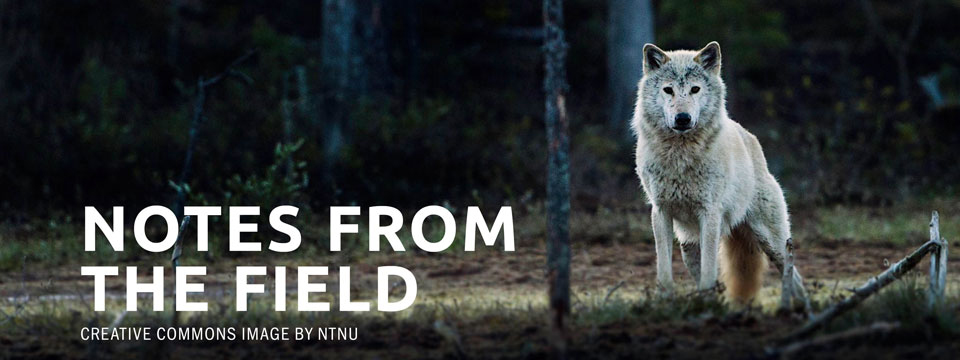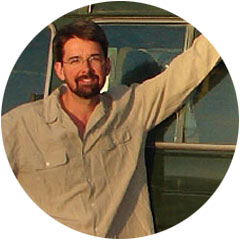OUR WILDLIFE TRUST
When George Washington and the Continental Army crossed into New Jersey on December 26, 1776, the story of the U.S. environmental trust began. Washington’s army caught the British mercenaries unawares after Christmas night parties and began a series of running battles that eventually pushed out King George III. Washington ushered in the new sovereign – we the people of these United States. We became the sovereign beneficiaries of a trust encompassing all the land, waters, and every environmental asset associated with them. This story resonates for me because I was born the day after Christmas and grew up in New Jersey before moving to the Midwest. Not only did Washington’s army win in my hometown of Princeton but our sovereign rights to environmental assets were also upheld in a New Jersey case about oyster beds on private land, which went all the way to the U.S. Supreme Court. For almost 200 years, U.S. courts have upheld the democratic ideal that a public trust in environmental assets was left to all of the people including future generations. In the 1892 landmark case of Illinois Central Railroad vs Illinois, the U.S. Supreme Court established that the trust is permanent; the government never gives up control even after it grants environmental assets to private interests such as the Illinois Central Railroad, and such grants or titles may never severely impair the principal of the asset. In that way the citizens of Illinois got back over 1000 acres of Lake Michigan shoreline for bathing, fishing, boating, and appreciation. The democratic ideal behind the environmental public trust can be stated in one sentence.
Governments are accountable to the broad public interest for preserving and regulating the exploitation of environmental assets as a trust for current and future generations.
This single sentence seems simple but is layered and powerful. In 1970, the public trust doctrine was revived by an eloquent author and former attorney, Joseph Sax. He showed that the public trust doctrine is not an antiquated and parochial oddity. After he published his seminal book in 1970, 21 other countries adopted the doctrine in one form or another. Indeed, 45 U.S. states explicitly mention a wildlife trust or similar language in statute or constitutions, and many state Supreme Courts have upheld key elements of the doctrine. One puzzle is why most of these states eradicated wolves and other large native carnivores after articulating wildlife trusts?
I became interested in the public trust for wildlife because of wolves. The gray wolf was exterminated from at least 35 states by the late 1950s. The early 20th century wildlife champions such as Teddy Roosevelt, Aldo Leopold, John Muir, and Gifford Pinchot did not save wolves or other large predators, which were subject to government bounties, unregulated killing, and competition for the same deer and elk that much more numerous hunters claimed for themselves. But wolves began to recover after the passage of the Endangered Species Act (ESA) in 1973, which is now endangered itself in the face of legislators who seem anti-science, anti-wolf, and pro-extinction. Wolves became a political hot potato starting in 2005 and remain hot to the present day as federal courts square off with the Department of the Interior aided by Congressional machinations. Governmental denunciations of the ESA and of wolves are why I tell my audiences that the health of our wolves reflects the health of our democracy.
Predators require special care because so many governments have historically abdicated their trustee responsibilities by eradicating predators or permitting their unregulated exploitation by narrow interest groups. Predators also pose special challenges for governments that respect the public trust, because human uses that deplete the asset – such as hunting, trapping, and culling – appear incompatible with other uses such as wildlife-watching or aesthetic appreciation, unless we plan carefully over vast areas. Wise plans require careful and sophisticated measurement of the costs and benefits of any uses that would deplete the predator populations, such as wolf-hunting. Yet the science of sustainable use of predators remains unsettled. It remains unsettled both because of genuine scientific uncertainty and because the scientific evidence has been distorted intentionally by vocal, moneyed, special interests favoring killing predators often to protect their private interests in deer, elk, livestock, or bear-hunting hounds in Wisconsin where I write these words.
If you want further information on the complexity of predators and the public trust, please read our published treatment that has passed peer review, or watch short videos of my talks on the public trust here.
In myriad, subtle ways, our county, state, and federal governments have failed to recognize and uphold the principle that environmental assets are held in trust for us and for future generations. Let’s start with future generations. OK, done. That’s all the consideration that they ever get in today’s wildlife allocation decisions. Have you ever heard of a seat on a natural resource board devoted to a representative of the next generation? Well, in principle, they get the principal. The next generation should inherit the principal of the asset. All we get to use today is the interest on that principal. This is why children are suing U.S. governments over atmospheric trusts. The litigants argue (correctly I believe) that the government has neglected its responsibility to protect future generations’ right to the predictable climate we all have enjoyed. Instead we have natural resource commissions full of interest groups ignoring the majority of our citizens and apparently unaware of their legal obligation to the next generation. Take Wisconsin’s state wolf advisory committee. If you spoke critically about wolf-hunting, you were denied a seat on the committee that would recommend to hunt or not to hunt and how many wolves to hunt. Thieves are guarding our assets and they have the nerve to demand to regulate themselves, and to tell us how much of the asset we can enjoy even though we don’t deplete it. Nonsense. Users that deplete an asset should get regulated because there is less of the asset for the next generation and for those who don’t deplete it. Therefore, my colleagues and I recommend the public demand trustees chosen by the federal government’s uniform code of trusts – which means trustees who are accountable, impartial to all beneficiaries, and most of all understand that the principal of the trust must be preserved for the next generation.
The puzzle is why so many decision-makers have forgotten 200 years of teachings about the U.S. public trust? My colleagues and I see two very simple explanations. First, the history of the wildlife trust has been forgotten or retold in an illegitimate way that places exploiters in a central decision-making position. And secondly, loud moneyed interests overwhelm democratic principle. As a consequence the courts have become the battlegrounds for many endangered species and for many environmental protections. That makes sense if the executive branch and the legislative branches are allocating assets to narrow interests without regard to the trust. The judicial system defends our laws and our constitution. In wildlife circles, apologists for the status quo and those who seek to remove federal protections for wolves have labeled lawsuits as mere technicalities and divisive tactics. Social movements rarely make progress without challenging entrenched powers. The important thing for all of us is to be on the right side of such divisions. For me the choice is clear. I choose the broad public interest.
Students ask me what they can do. I say defend the public interest. Defend the independence of judges against efforts to make them ‘more democratic’ by forcing them to campaign for election– because that can make your courts beholden to moneyed interests. Prevent the executive branch from appointing your trustees because executives tend to appoint special interest cronies. Push for constitutional amendments that protect the public trust and the broadest public interests. Ask politicians to commit to an enforceable code of ethics that places the public interest first. Of course, the root of the problem is money in politics. But we’re talking about assets too. Preservation of assets and prudent allocations to the current beneficiaries is well understood today. We need to demand trustees that understand assets and future generations, not trustees allied to interest groups. Someone has to defend democracy in every generation. Now it’s our turn.
Adrian Treves, PhD, is Associate professor of Environmental Studies and Director of the Carnivore Coexistence Lab at the University of Wisconsin-Madison. He also serves on the Science Advisory Board Project Coyote and the Northeast Wolf Coalition.
Above photo: (Canis lupus) Gray wolf by Per Harald Olsen/NTNU (CC BY 4.0)


